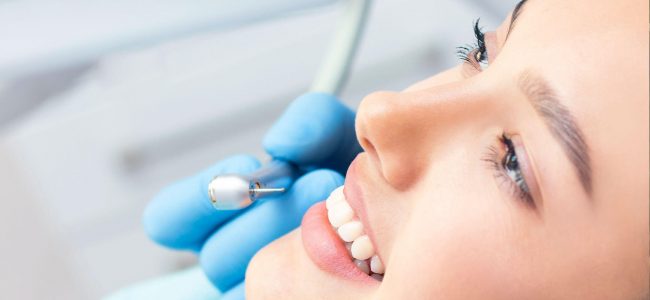Having your teeth cleaned by a professional dental hygienist is essential to good oral health. Not only can a hygienist get your teeth cleaner than you could at home, but a dentist checks your teeth and gums for problems at the same appointment. These issues would otherwise go undetected until they caused significant pain and expense.
People often feel nervous about going to the dentist because they are unsure of what to expect. This is especially true of children and adults who have not been to a dentist in many years. Our goal at Ideal Dental is for patients to feel comfortable and trust our team’s expertise. We outline what you can expect during a typical dental cleaning in this blog.
Dental Cleanings Start with an Exam of Your Mouth
One of our skilled and friendly dental hygienists will begin your cleaning by examining the inside of your mouth with a handheld and angled mirror. The mirror allows the hygienist to see inflammation, tooth decay, and other issues that may not be easy to spot with a visual inspection alone. Your dental hygienist will notify a dentist if any issues come up that the dentist should inspect before the cleaning starts.
Removing Plaque and Tartar Comes Next
While using the dental mirror for guidance, the hygienist uses a tool called a scaler to remove plaque and tartar that has accumulated on your teeth, between teeth, and on your gums. If the hygienist needs to spend a lot of the appointment scraping plaque and tartar, it means you should spend more time brushing and flossing at home. Although you cannot remove all the plaque and tartar yourself, brushing at flossing at least twice a day will greatly reduce the build-up and your discomfort with the scraping process.
A Dental Hygienist Polishes Your Teeth
Once your hygienist feels satisfied with the amount of plaque and tartar removed, the next step is to use a high-powered electric brush to polish your teeth. The toothpaste applied to the electric brush will feel gritty on your teeth, which is necessary to scrub them. You can choose from among several toothpaste flavors, and you will be able to rinse your mouth with water a short time later.
Polishing your teeth with a high-powered electric brush is safe to do during your bi-annual cleaning and exam. However, you should not do it at home or schedule dental cleanings more frequently because the process can be hard on your tooth enamel.
Flossing and Fluoride Treatment
The last tasks your dental hygienist completes before calling a dentist into the room are flossing your teeth and applying fluoride treatment. A dentist will then visually inspect your teeth and gums. You will need to schedule a follow-up appointment if the dentist detects any problems. Otherwise, you do not need to return for six months.
Find your local Ideal Dental office today to schedule a visit with our trusted dentists if you or your child have not had a cleaning and exam in more than six months.
